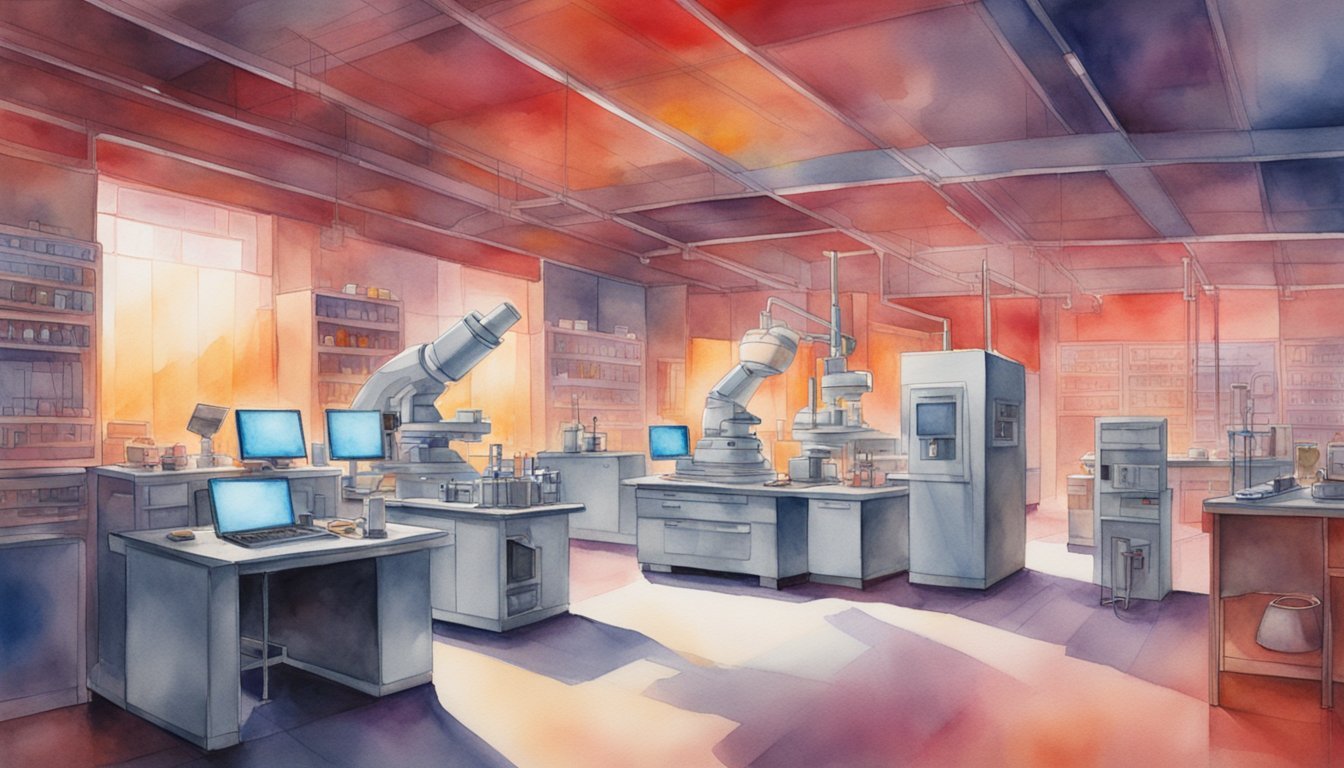Fundamentals of Infrared
Exploring the fundamentals of infrared (IR) technology requires understanding its discovery, place in the electromagnetic spectrum, and the unique properties of IR waves that make it vital for numerous applications.
Discovery of Infrared
In 1800, astronomer William Herschel conducted an experiment that led to the discovery of infrared light. He placed a thermometer in sunlight refracted through a prism and found that the temperature increased when the thermometer was placed beyond the visible red light. This unknown radiation was later named “infrared,” meaning “below red,” due to its position just beyond the red light in the visible spectrum.
Infrared and the Electromagnetic Spectrum
Infrared radiation is a form of electromagnetic radiation that falls between visible light and microwaves within the electromagnetic spectrum. Its wavelengths range from approximately 700 nanometers (nm), just beyond the visible light spectrum, to about 1 millimeter (mm), where they meet the microwave band. As part of the electromagnetic spectrum, infrared waves travel at the speed of light and are characterized by their frequencies, which are inversely proportional to their wavelengths.
Properties of Infrared Waves
The properties of infrared waves are closely tied to heat and temperature. Any object with a temperature above absolute zero emits infrared radiation. The frequency of the infrared wave is determined by the temperature of the object, with hotter objects emitting higher frequencies. Different from visible light, infrared waves can penetrate some materials, and are absorbed and emitted by others; this is why they are useful for thermal imaging applications. Blackbody radiation is a concept in the study of infrared, involving the emission of electromagnetic radiation by an idealized object that absorbs and then reemits all frequencies.
Infrared technologies are extensively applied in various fields for their ability to capture the invisible heat energy emitted by objects, allowing for advances like night-vision devices and thermal imaging cameras.
Infrared in Science and Technology

Infrared radiation plays a crucial role in numerous scientific and technological applications due to its ability to interact with matter differently than visible light. Unseen by human eyes, infrared radiation is a fundamental tool in expanding our understanding of the universe and enhancing various technological devices.
Infrared in Astronomy
Astronomy has benefitted immensely from the use of infrared technology. By observing the infrared waves, astronomers gain insights into celestial objects that are otherwise obscured by dust in the visible spectrum. Infrared astronomy allows the study of cooler objects in space, like distant planets and molecular clouds, which can be the birthplaces of stars and galaxies. The James Webb Space Telescope, successor to the Hubble, provides a deeper view into the far-infrared region to explore the early universe and the formation of celestial bodies.
Infrared Devices and Applications
In everyday life, infrared technology is applied in various devices, enhancing their functionality and efficiency. The typical household remote control, for example, uses infrared rays to wirelessly transmit signals to televisions. Infrared is also integral in a multitude of sensors for detection purposes—from motion sensors to nighttime night vision goggles. In medicine, thermal imaging cameras can assist with monitoring blood flow and detecting abnormalities in body temperatures.
Infrared in Research and Industry
The research and industrial sectors employ infrared technology for its unique properties. Infrared spectroscopy is used extensively to analyze chemical compositions through absorption patterns, which differ based on molecular structures. This method aids in everything from forensic analysis to monitoring environmental pollution. In industry, thermal imaging helps in checking machinery health by detecting heat patterns indicative of potential failures, optimizing maintenance processes and preventing costly downtimes.

